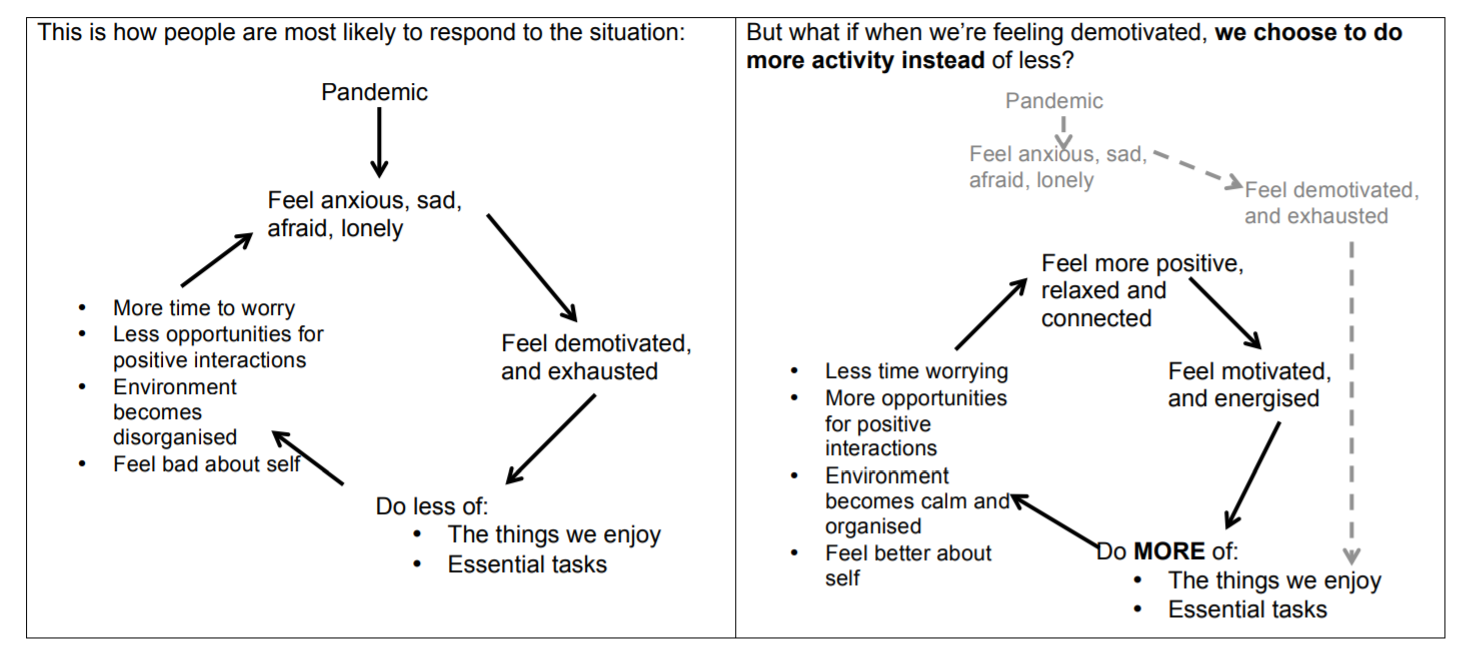Managing Mood
Managing Mood with Activity Scheduling
While it can be fun to live spontaneously and do things as and when we feel like it, when our mental health takes a hit the likelihood is that we won’t feel like doing a lot! Having a lack of structure can also make it difficult to feel as productive and active as we’d like to, which in turn can impact on mood and how we feel about ourselves. Activity scheduling can help with managing our mood. The cycles below explain why it is so important to keep busy during this time:

However, doing more when we really don’t feel like doing anything is easier said than done, and so it might require a bit more planning than usual! Use the activity scheduling template below to plan out an ideal week (given the circumstances and taking into account essential tasks, chores and jobs also!). You don’t have to plan out every minute, but make sure that you include the things that are most important to you to get done. It can help just to have one or two main activities for the morning, afternoon and evening.

Make sure you include:
- Meal times
- Important household chores
- Work (if you are working from home) or other meaningful projects if not
- Calls or time to connect with others
- Exercise
- A mental health hour (relaxation, meditation, working through self-help ideas)
- Things just for you (baths, reading, TV, just a lie down!)
How does this fit with goal-setting?
To make sure your time is being used really meaningfully it can help to set specific goals- see our document on ‘Setting Values Based Goals’ for ideas on how to do this in lockdown/self-isolation.
Getting the most out of activity scheduling: It can also help to monitor over time which activities are best for your mental health, so you know which to do more often. One easy way to do this is to ‘ACE rate’ each activity:
- Once you have completed an activity tick it off on your schedule
- Underneath write a number out of 10 for how much Achievement, Connectedness (to others) and Enjoyment you felt as a result of doing the activity
It is important to get a balance of these three things across your day, and to repeat the ones that give you the highest ratings!
On the next page there is a blank schedule. You can print one of these for each week, or draw up your own. Add some colour to it to make it more eye-catching and stick it somewhere you’ll see regularly, such as on the fridge door or by your kettle, or even on a wall by your bed so you can see your plan for the day when you first wake up.

